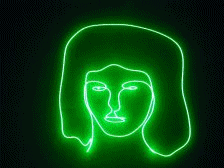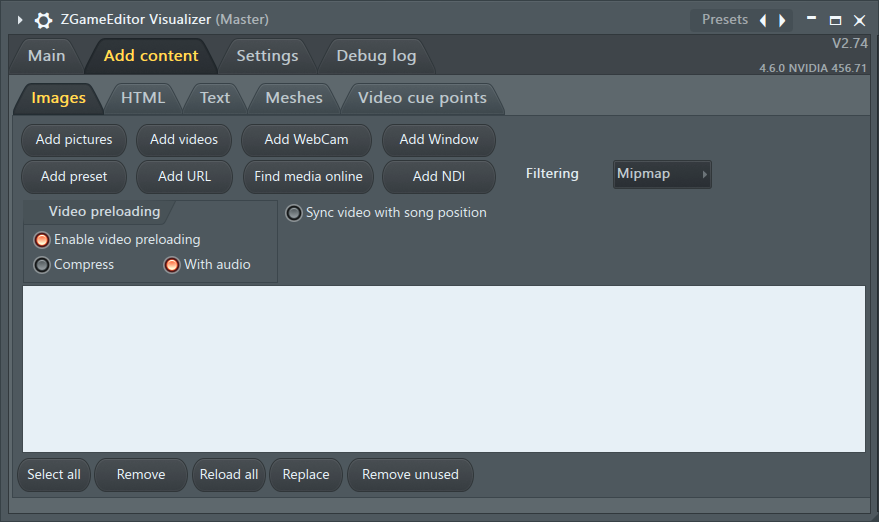
The user has the option of performing additional editing of the vector file either within the PointCab window or in Trueview.
#Lsd visualizer program free
We used the free Autodesk viewer, DWG Trueview, to visualize the output DWG files (see Figures 4 & 5). Following generation of the layouts, the user selects the area to be rendered into vectors for output to DXF, DWG, etc. The procedure for using the Vectorizer is simple. Time to a DWG file was on the order of seconds following implementation of the "Vectorizer" tool.
#Lsd visualizer program pdf
In this case, the output products are a PDF report and a 3D window displaying the meshed volume (see Figure 2). The Volume Calculation tool was likewise as fast. Fishing through clouds of data has always been difficult, but PointCab seems to have found an easy way to allow the user to innately grasp what they’re looking at. By using a 2D layout, the presentation of the point cloud data is much more coherent and understandable. The ability to parse the data from buildings and features by "slicing" through the objects (horizontally and vertically) is outstanding. Using the Layout tool to render a planimetric layout was even faster. In several seconds, the complete LAZ (compressed LAS) file was loaded and rendered into the 3 different 2D views. PointCab can be run also on a small Laptop. For reference, the test computer we used was a Lenovo W530 workstation with 32GB of RAM and an Intel CoreTM i7 vPro chip. We were able to rapidly move from one step to the next without waiting.
#Lsd visualizer program software
The software seems to be as fast as the company claims. We noticed that the speed to render the plan and profile images was very quick. The data samples are very interesting and, clearly, were generated using high-resolution, high-accuracy scanners. We chose to use our own data as opposed to the samples available on the PointCab downloads page. We then tested the volume extraction tool on data from a small stockpile of soil. Additionally, we looked at a more simplified footprint of a residential building. We looked at an intricate building footprint (see Figure 1) and extracted layout lines. Likewise, companies can share information with their customers (who may lack the capability to visualize point cloud data directly) by submitting more standard documentation to them.įor this brief software review, we confined our testing to just a few of the many modules available in PointCab. This way, Steffen informed us, legacy CAD workflows can still take advantage of information extracted from scan data without users having to spend large amounts of money updating data-handling infrastructure. DWG, DXF, DAE) and provide web export and documentation (e.g. The approach to optimizing workflows seems to be rather simple: take massive LIDAR pointcloud datasets and render them into easy, CAD-ingestible formats (e.g. PointCab is able to import an impressively number of pointcloud formats. The software was initially designed to handle data only from high-resolution static scanners, but as mentioned, it is now able to import virtually any type of LIDAR data (even point cloud data from UAV software like Pix4D) for geometric analysis. The pointcloud processing speed scales directly with the number of cores available within the processor.įor our testing, we employed a Zeb1 handheld scanner for data generation to ascertain how well PointCab would handle the Zeb1’s lower resolution data. The software can be used in a wide field of applications, like civil engineering, planing, surveying, forensic and archaeology.ĬEO Steffen told us that the software employs unique algorithms which leverage multicore processor technology and run in parallelized format. PointCab claims that the software is 6 times faster than comparable packages. They spun-off a separate company (PointCab GmbH) that same year.Īccording to Richard Steffen, the CEO, their proprietary data format "lsd(x)" was extended in 2014 to unordered pointclouds which then allowed the software to handle data from mobile LIDAR systems and also point cloud data from UAV photogrammetry. In 2013, founders Richard Steffen and Eike Thiele produced a new, enhanced version of the product with a more intuitive interface and faster performance. PointCab Software has its origins in an effort by Laser Scanning Europe to find a way to optimize LIDAR post-processing and analysis workflows for their customers. We ran some quick validation tests using our own data and present the findings and opinions here. According to the advertising, PointCab "creates a layout, section, poly lines, profile lines, DTM, meshes, and project documentation".


The LiDAR News technology review team recently took advantage of an opportunity to evaluate a new software offering out of Germany.

Multi-format outputs: DXF, DWG, DAE, & more A 1.136Mb PDF of this article as it appeared in the magazine complete with images is available by clicking HERE


 0 kommentar(er)
0 kommentar(er)
